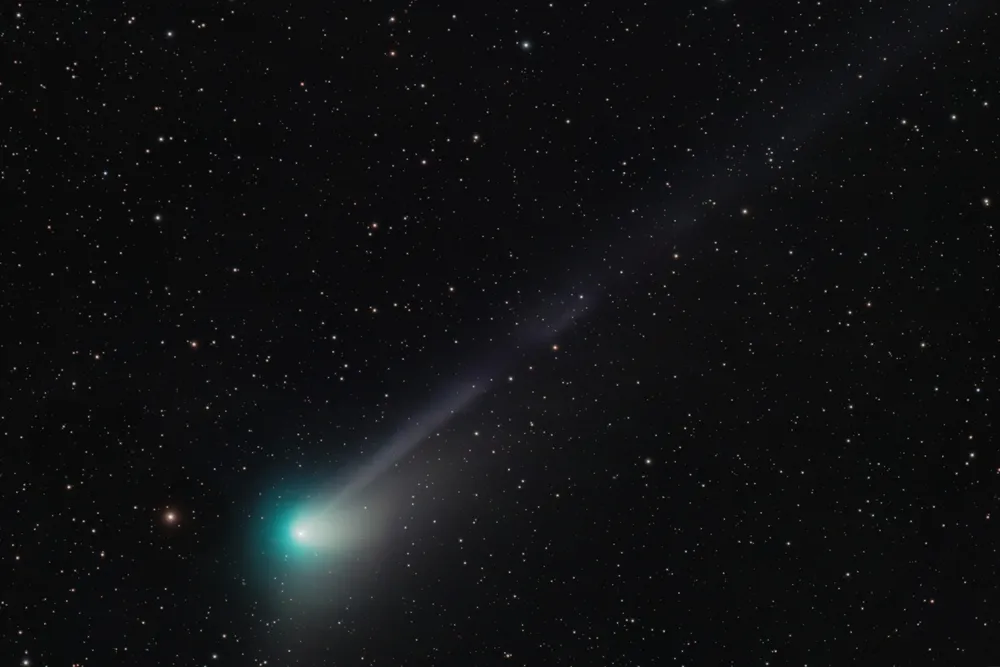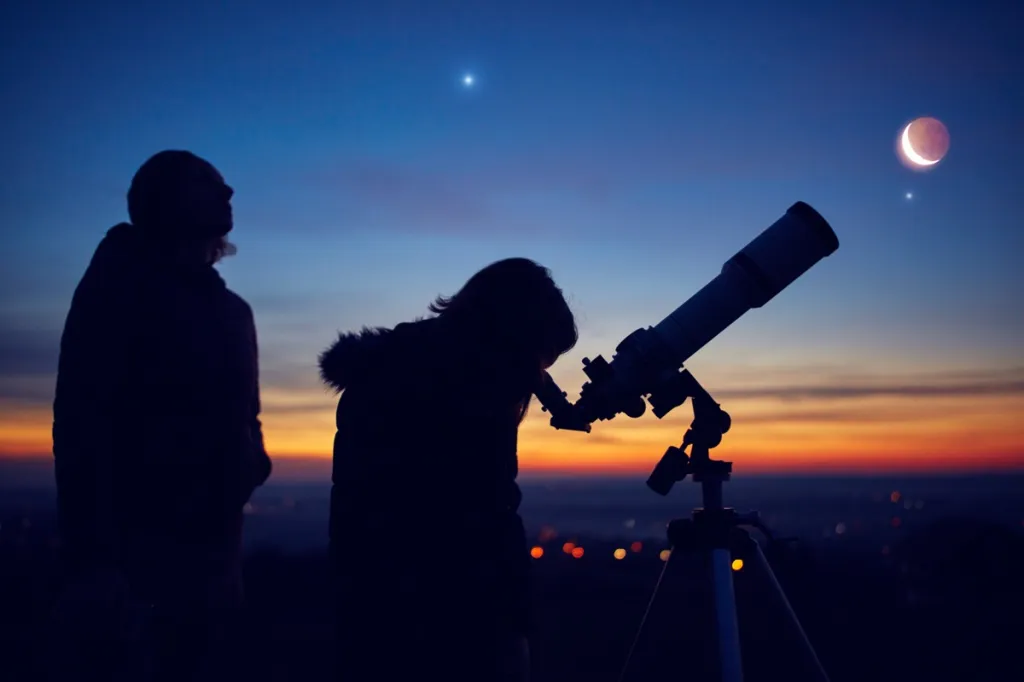Rare Green Comet Passing Earth Is Now Visible Without a Telescope—How to Spot It

Significant celestial events can be an excellent excuse to stay up a little late and get outside to catch a glimpse. They become even more attractive to large groups of people when they’re uniquely beautiful or can be seen using little to no equipment, such as during a total solar eclipse. If you’re one of those amateur astronomers who wouldn’t dream of missing such an event, you may want to take a minute to look up later tonight. A rare green comet is passing nearby Earth right now that’s visible even without a telescope. Read on to see how you can spot this celestial visitor in the night sky.
READ THIS NEXT: NASA Promises Humans Living on the Moon in 10 Years.
C/2022 E3 (ZTF) is visible from Earth for the first time in 50,000 years.

It’s one thing to be lucky enough to catch sight of a shooting star on any given night. But it’s an especially extraordinary occasion to be able to glance up at the sky and see an object that hasn’t been visible since Neanderthals walked the Earth 50,000 years ago.
Scientists have been abuzz about Comet C/2022 E3 (ZTF) since spotting it for the first time last March as it passed through Jupiter’s orbit. The object’s passage through the inner solar system is now reaching its climax, having hit its closest point to the sun—also known as perihelion—on Jan. 12. But the spectacle is just beginning: The glowing green comet became visible to the naked eye on Jan. 16, and will continue its fly-by as it passes within 26 million miles of Earth on Feb. 2, according to NASA’s “What’s Up” blog.
You might be able to find the comet using some very familiar constellations in the night sky.

It can often be challenging to locate an object in the night sky if you don’t know where to look—even if it is a comet that’s visible to the naked eye. But in the coming days, you might be able to help guide yourself to the right place by using some relatively well-known celestial points of interest.
All it takes to spot the comet is locating the Big Dipper. The group of stars—which is part of a constellation called Ursa Major—becomes easier to spot as it moves higher above the horizon after autumn for viewers in the northern hemisphere, Forbes reports. Comet gazers should look above the horizon to the north and northeast to spot the constellation, where the object will be hanging close by as of Jan. 26.
It will be visible near the easy-to-spot sky feature until about Jan. 30, when the object will continue its trek further east in the sky towards the constellation Camelopardalis in time for its closest fly-by to Earth, Space.com reports. After that, the comet should remain visible and might even become easier to quickly find by Feb. 10 as it moves close to Mars, one of the brighter objects in the night sky.
RELATED: For more up-to-date information, sign up for our daily newsletter.
You still have a few weeks to get outside and take a look.

Even though the comet is already past its perihelion, it’s still within a good eyeshot of our planet for at least a few more weeks. Those looking for the grandest spectacle may want to circle Feb. 1 on their calendars, when the object will pass closest to Earth and will likely begin to glow its brightest, according to astronomy website In-The-Sky.org. You will most likely be able to start to see it not long after sunset.
If you’re planning on catching a glimpse, just make sure you don’t wait around too long. The celestial object will begin to pull away from our planet after its fly-by, eventually becoming too faint to spot by mid-February, The Guardian reports.
Unfortunately, not everyone on Earth will be able to see the comet at the same time. Those who live in the southern hemisphere won’t have a view of this patch of the sky until early February, just before the object begins to pull away and fade from view, according to NASA.
The comet’s appearance will likely change from one night to the next.

While the comet may be visible without any instruments, you may still want to set yourself up for success if you want the best view. As always with stargazing, it’s best to view from someplace with minimal light pollution and where the sky will be as dark as possible. If you’re stuck somewhere with less-than-ideal conditions, it might be best to use a pair of binoculars to help locate the comet in the sky, Forbes reports. And it should go without saying that you should check the weather forecast to make sure you have a clear, cloudless night for viewing.
There are also convenient instruments at your disposal that can make it even easier to locate the celestial object. Websites like In-The-Sky.org or TheSkyLive.com can help point you in the right direction with time charts and cancellation maps, and apps like Star Walk or SkySafari can turn your phone into the ultimate augmented reality guide to the heavens.
It’s also important to remember that the object will likely change its shape and brightness—sometimes even over the course of just a few hours—as it moves through the sky, Forbes reports. Ultimately, it’s best to show up with a sense of optimism and remain patient while locating the comet and taking it all in.
“Comets are intrinsically highly unpredictable objects, since their brightness depends on the scattering of sunlight from dust particles in the comet’s coma and tail,” comet-tracking website In-The-Sky writes. “This dust is continually streaming away from the comet’s nucleus, and its density at any particular time is governed by the rate of sublimation of the ice in the comet’s nucleus, as it is heated by the sun’s rays. It also depends on the amount of dust that is mixed in with that ice. This is very difficult to predict in advance, and can be highly variable even between successive apparitions of the same comet.”